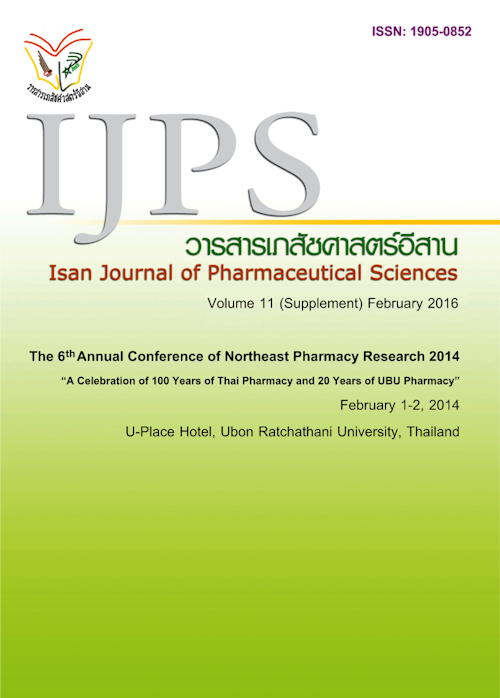Pharmacokinetic Study and Therapeutic Drug Monitoring of Vancomycin in End Stage Renal Disease Patients
Main Article Content
บทคัดย่อ
Introduction: Vancomycin, a tricyclic glycopeptides antimicrobial, usually use in treatment of serious gram positive bacterial infections has narrow therapeutic index. Presently, resistant microorganisms to vancomycin had been gradually reported, therapeutic drug monitoring (TDM) of vancomycin should be performed during treatment. According to vancomycin excretion is predominantly by glomerular filtration, the data of pharmacokinetic parameters in renal insufficient patient is necessary for prevention of adverse drug reaction and effective dosage regimen. Objectives: to study pharmacokinetic parameters of vancomycin and design the appropriate plan for TDM in end stage renal disease (ESRD) patients. Method: Retrospective study of the serum concentration of vancomycin data after receiving the first dose in patients with ESRD was performed. Then the calculated pharmacokinetic parameters from short-infusion model were used to predict the vancomycin concentrations in various times after administration to evaluate and design the appropriate plan for TDM. Results: The data of serum vancomycin concentrations from 123 ESRD patients whom received vancomycin 1 g i.v. drip in 2 hr q 96 hr at first dose were collected. The calculated pharmacokinetics parameters of vancomycin; volume of distribution, elimination rate constant, clearance, and elimination half-life were 36.57±7.21 L, 0.003 ± 0.025 hr-1, 0.40±0.14 L/hr, 71.76 ± 32.39 hr, respectively. In addition, at 24 hr post dose, there were 52.85% and 16.26% of patients had subtherpeutic concentration according to the recommended target trough concentration of 15-20 and 10-15mg/L, respectively. Conclusion: At 24 hr after the first dose, TDM of vancomycin should be performed for designing and optimization of dosage regimen in individualized ESRD patients.
Article Details
กรณีที่ใช้บางส่วนจากผลงานของผู้อื่น ผู้นิพนธ์ต้อง ยืนยันว่าได้รับการอนุญาต (permission) ให้ใช้ผลงานบางส่วนจากผู้นิพนธ์ต้นฉบับ (Original author) เรียบร้อยแล้ว และต้องแนบเอกสารหลักฐาน ว่าได้รับการอนุญาต (permission) ประกอบมาด้วย


